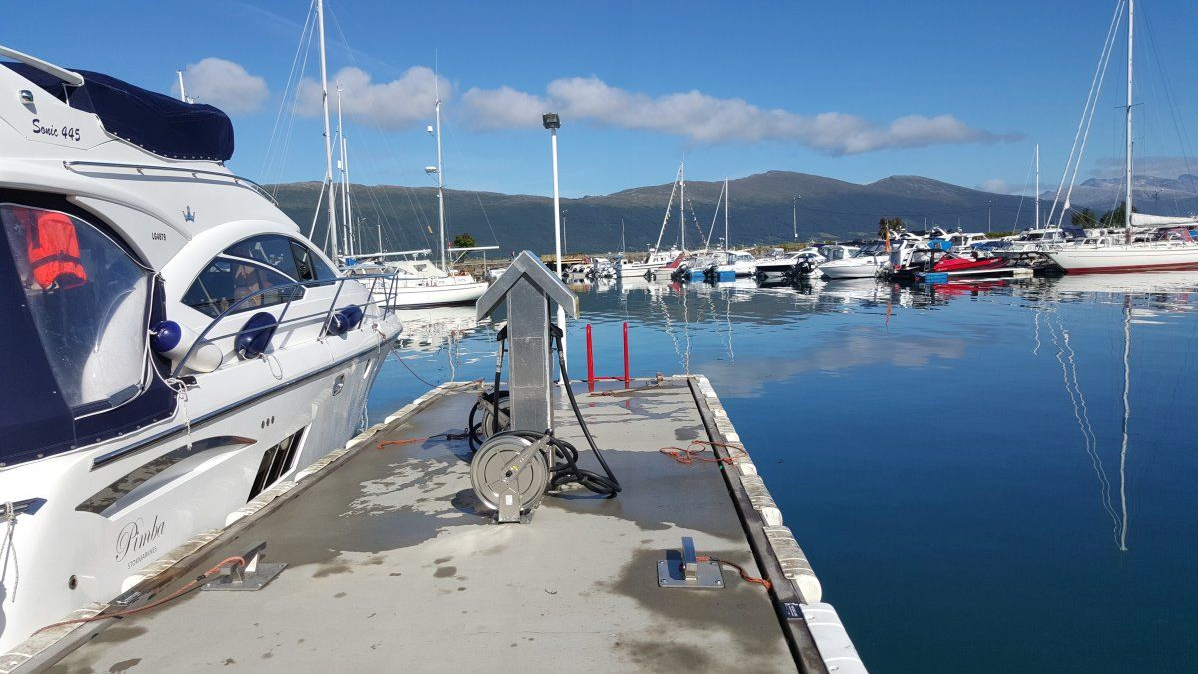When fueling your boat, take care to avoid spills and the spread of gasoline fumes to prevent fires and explosions. The bilge area is often clogged with gasoline fumes.
Follow these fueling guidelines to avoid potentially dangerous, even explosive situations for you, your passengers, and your boat
You should always take the following precautions before fueling your boat:
Turn off the engine and secure the boat to the fueling dock.
Get your passengers off the boat and onto the dock after unloading any portable fuel tanks. As a result, spills will be minimized and the boat will remain stable.
Avoid smoking or bringing flames into the area. Ensure that all electrical equipment that could cause a spark is turned off as well.
Make sure all doors, windows, and hatches that could let gasoline fumes in are closed. To circulate air throughout your boat, open all doors, windows, and hatches once you're finished fueling.
As a final precaution, ground the nozzle against the fill pipe opening before filling your tank.
Your tank is now ready for filling.
Don't fill up your boat's tank beyond 90%. Gas can expand in this way and overflow can be prevented.
All gas tank air vents and valves should be open
Replace the gas cap tightly after fueling. Fuel vapors will not escape this way. Any spills or leaks should be cleaned up immediately.
Check to see if any fumes have escaped before starting the engine again. Whenever you smell fumes, increase air circulation to the area and wait until the fumes have fully dissipated before starting the engine.
Before starting your boat with an inboard gasoline engine, turn on the blower for four full minutes. The purpose of this step is to remove any fumes that may be lurking in the bilge.
Portable fuel tanks must be filled off the boat. After filling, store portable fuel tanks away from engines and electrical equipment in a well-ventilated area.
Emergency Boat Towing Austin offers Oli Drop and Fuel Drop services for boats and ships
Boat Fuel Conservation
It can be expensive to fuel up your boat, but you can conserve fuel with a few simple steps.
Boat Fuel Conservation Tips
You can help conserve fuel by doing a few simple things when fueling up your boat.
Here are some tips to help you get better mileage and reduce your impact on marine life when you use gasoline.
Fill your boat's tank no more than 90% full. Overflow is prevented by leaving room for gas to expand.
All gas tank air vents and valves should be open.
Replace the gas cap tightly after fueling. Fuel vapors will not escape this way. Any spills or leaks should be cleaned up immediately.
Make sure you use the correct propeller for your engine and regularly inspect your propeller for damage caused by rocks or debris.
On smaller boats, use a bailing can or a portable bilge pump to drain the bilge before leaving.
Reduce friction by keeping your hull clean.
You should always shut off your engine when you stop or dock.
As soon as you're out on the water, throttle back to cruising speed smoothly and evenly.
Read your engine's owner's manual for more information about how to operate it.

